ARGENTINA – Beef becomes bone of contention as prices soar (May 2021).
On May 18, cattle farmers started a 9 day halt on cow sales to slaughterhouses to protest against the governmental decision to suspend beef exports for at least 30 days in order to moderate skyrocketing domestic meat prices.
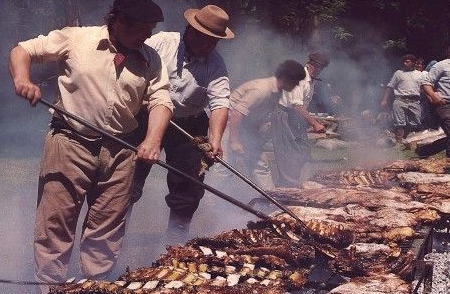
To justify this decision, President Fernández said in an interview that “The meat issue got out of hand. The prices rise month by month without justification. We have to put it in order”. The price rises contributed to Argentine inflation, already among the highest in the world, reaching 17.6% in the 1st quarter of 2021. The cost of living soared 46.3% in the last 12 months, and beef prices roses 65.3% over the same period.
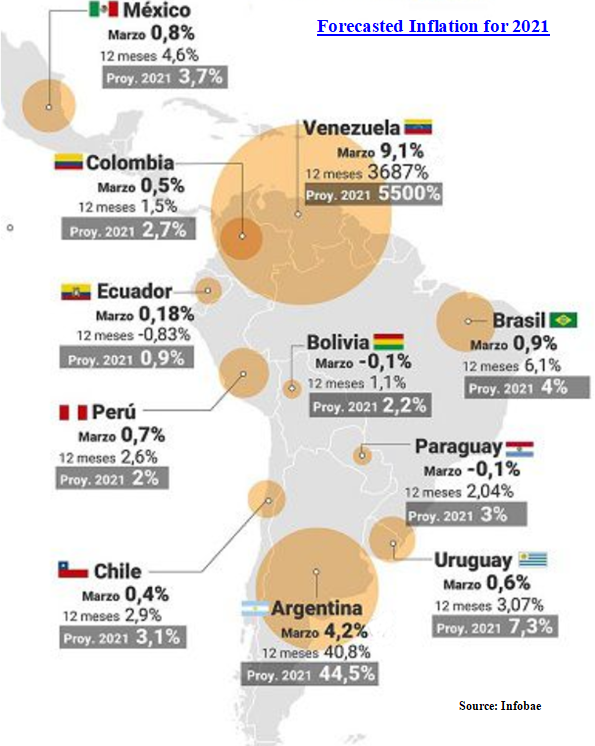
For the Argentine Rural Society President, “The damage caused by the measure will decrease the supply of meat, making prices rise as has happened in the past.” The beef industry employs around 100,000 people and Argentina exported 819 billion tons of beef and cow leather worth $3.4 billion in 2020-primarily to China and Russia. Neighbouring countries Such as Uruguay, Brazil and Paraguay will take advantage of this situation and benefit from new market opportunities for their beef.
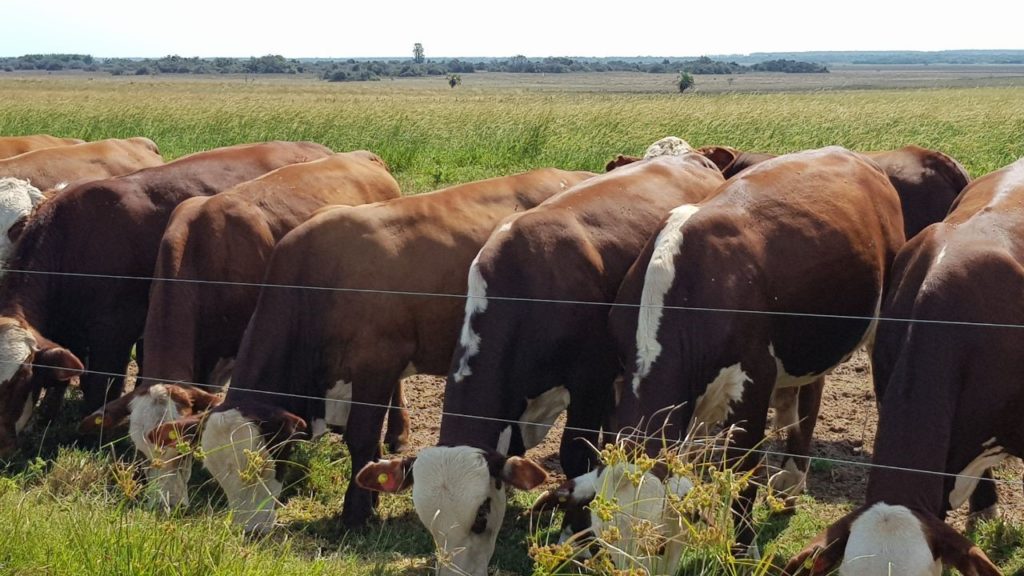
Back in 2006 when Néstor Kirchner had risen to 40 % export taxes on beef, the dollars from the commodity price boom perhaps gave Argentina the luxury of being able to sacrifice one of its main export markets but that luxury does not exist today …even with a new commodity boom placing grain prices at near-record levels. During that period, 12.5 million head of cattle and 19,000 jobs were lost that have not yet been recovered.
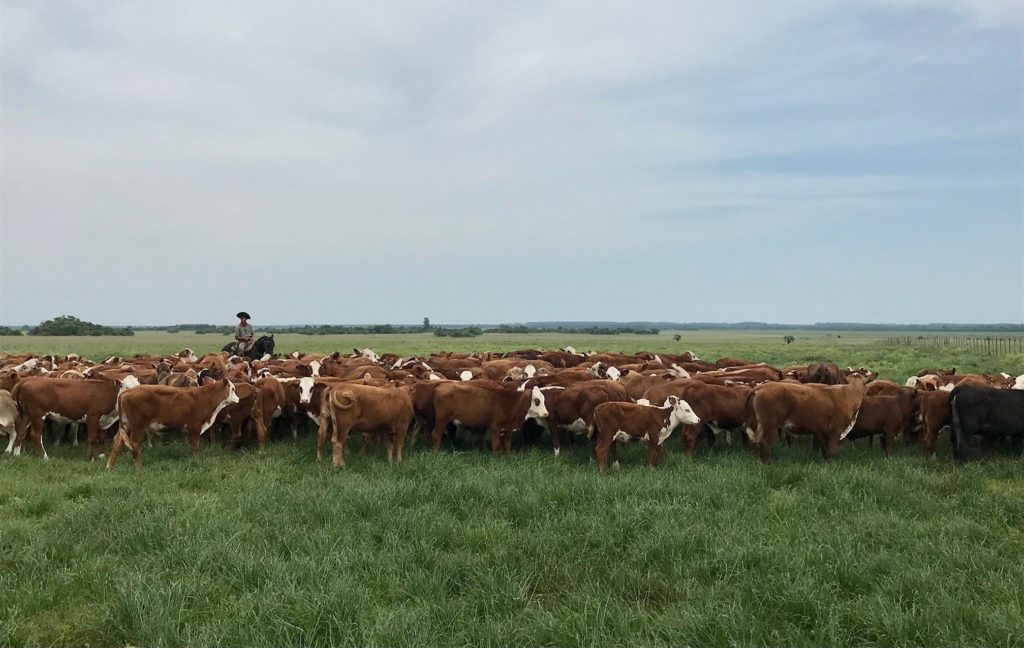
With respect to our operations (over 8,600 heads in Argentina), we have decided to defer our forecasted cattle sales (mostly male calves coming from Curupi Pora farm) while waiting to have more readability. We have dense pasture at the farm currently and sale them with a higher weight.
ARGENTINA – Land clearing and vegetation control at San Bartolo farm (May 2021).
Land clearing: We have initiated a clearing operation on 500 ha in order to control the natural vegetation which is typical for the region of Salta (a formerly forest area with a subtropical highland climate). This operation will help us in the re-growth of pastures in those plots and will also facilitate the management of the cattle.
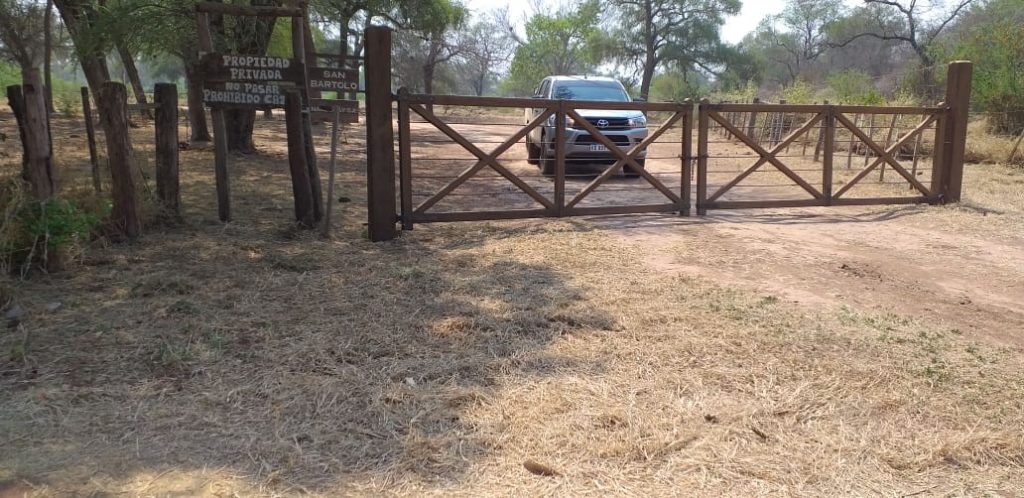
To this aim, we are only using specifically machinery and no phytosanitary products as their prices have significantly increased in the latest months. Furthermore, the results are longer to wait and in any cases, clearing machines must be used.
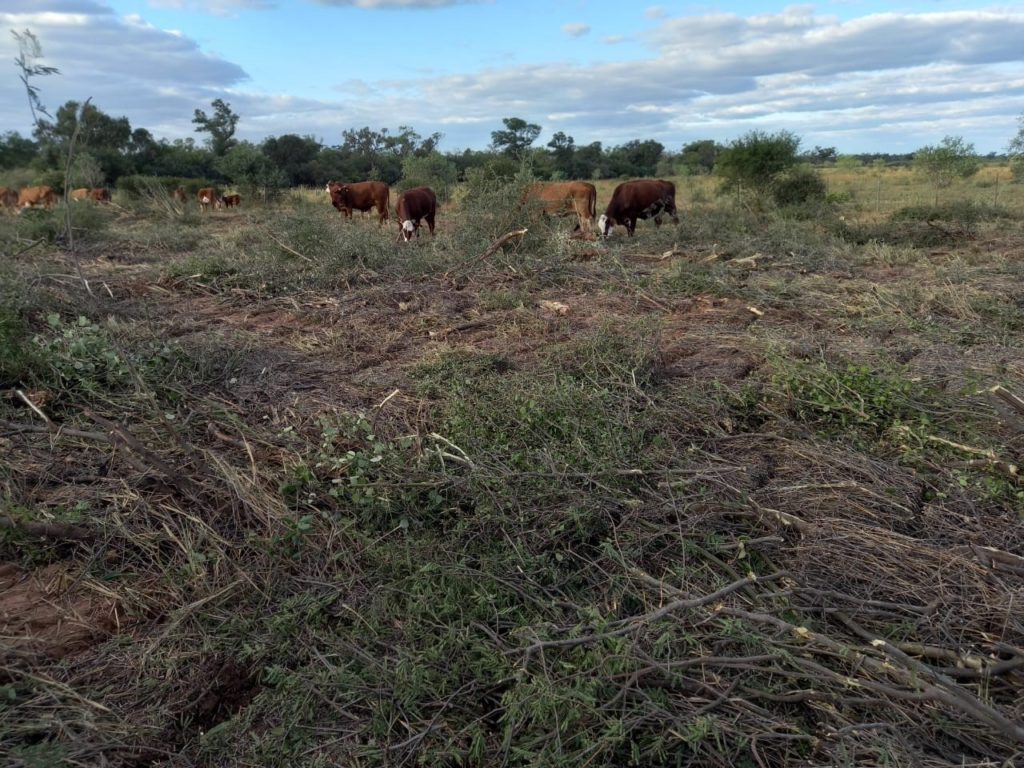

You can see the chopper blades in action. This machine was specifically designed to help control invasive brush, shrubs and weeds, while making cleaning or dismantling pastures much easier and faster than ever. His action is also helping to penetrate the soil enough to fracture the deeper, “dry pan” soil. This helps to prevent water run off and maintain high levels of water retention, while not hurting the existing grass or exposing the roots.
Once the dry pan soil is fractured, it enables water, air, and organic matter to penetrate deeper into the soil. This process allows grass or hay to establish deeper root beds, giving you a much more stable and hearty foliage. We hope to achieve our target of 500 ha before the rainy season will started in November, and increase our chances of pasture re-growth.
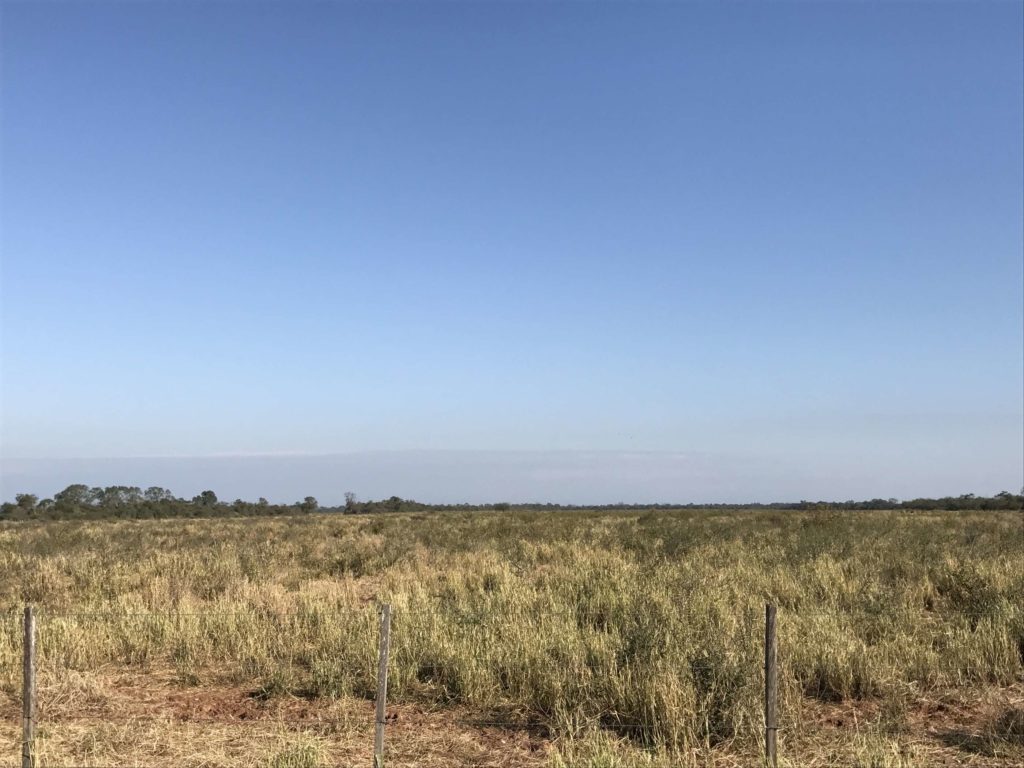
Cattle operation: We have currently around 3,000 heads at the farm. After the intense drought we faced since March 2020, the cattle need time to return to normal condition. In the meantime we continue to supplement with pellets and corn for the most sensitive categories.
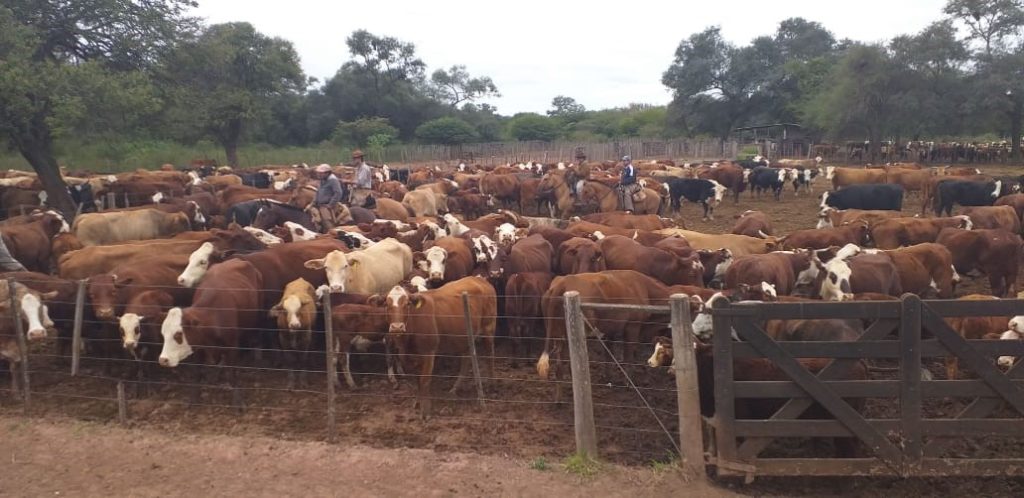
Cattle service is underway and inseminations should be completed by mid-May (1,240 cows). Fertility tests should then be available by mid-end of June. For this service, we don t have big expectations given the drought experienced earlier. We will evaluate the opportunity to give the cows a 2nd chance or to sale the weakest as beef to slaughterhouses in order to stabilize the herd and reduce death ratio as well as supplementation costs.
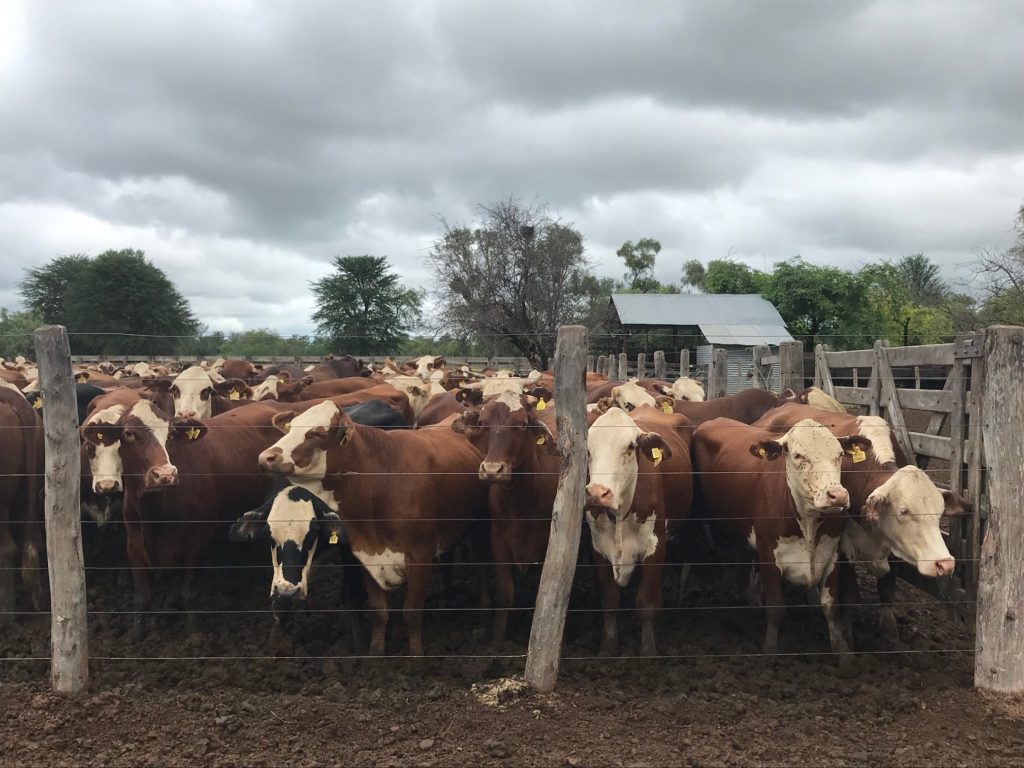
PARAGUAY – Land preparation for soybean at Salitre Cue (May 2021).
While Paraguayan authorities took starker approach at Covid-19 with further restrictions, we have continued land preparation work for soybean cultivation next season.
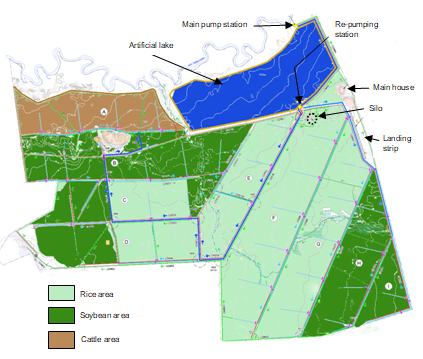
By now, 50% of the entire development process has been completed on the entire surface dedicated to soybean cultivation (1,100 ha).


Soybean land preparation involves plowing to “till” or dig-up, mix, and overturn the soil as you can see on the video and pictures. It also requires harrowing to break the soil clods into smaller mass and incorporate plant residue, and leveling the field.
Given the specificities of our farm’s soil (pH), the next step will be to apply a fertilizer rich in limestone to the freshly prepared land. We expect that all land preparation work will be completed by end of July.

Regarding our rice activity and given the fact that we sold all our production, we take advantage of this situation to offer to our neighbors our drying and storage facilities in order to generate incremental revenues.

As rains are back and pumping restrictions have been lifted, we take the opportunity to fill our reservoir which was completely empty given the intense drought we face earlier this year.
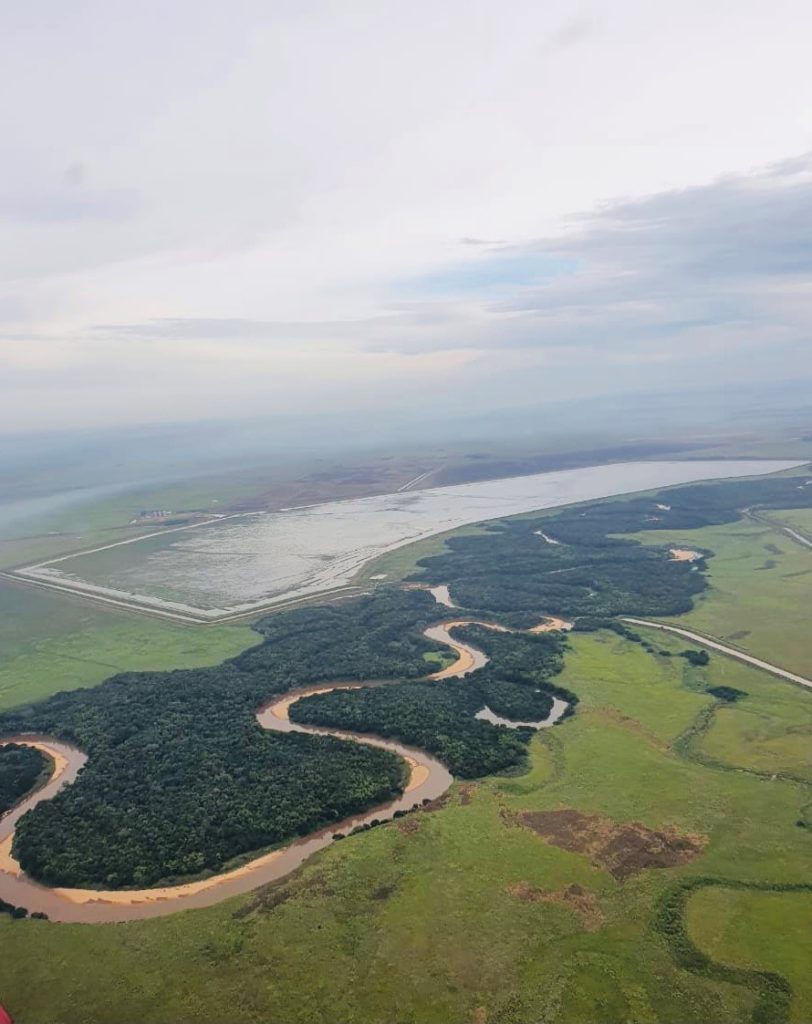
PARAGUAY – Beginning of land preparation for soybean at Salitre Cue (April 2021).
As previously mentioned, we have agreed with our partner to add soybean cultivation to our mix for diversification purpose. Our objective is to develop 1,100 ha of soybean cultivation at the farm over the next 3 years.

On April 9, we have started land preparation work for soybean cultivation in block H. All the soybean area which is going to be developed was till now a complete virgin land.
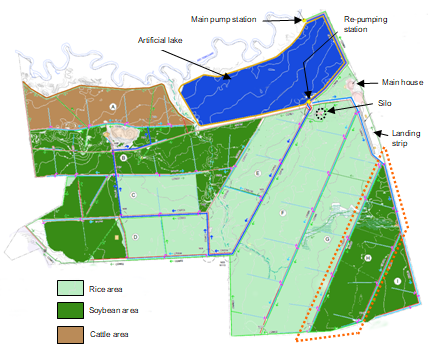
Soybean land preparation typically involves plowing to “till” or dig-up, mix, and overturn the soil. It also requires harrowing to break the soil clods into smaller mass and incorporate plant residue, and leveling the field.
Positive outlooks for soybean cultivation: The change in eating habits in the higher income population is expected to increase demand for protein as well as the replenishment of Chinese pig herd should keep the demand for soybean high for the next years. World demand for soy is expected to grow by 1.5% per year until 2028.
Argentina, Brazil and USA Soybean carryout Vs Consumption/Use (Source: USDA/Wasde)

On the other side, stocks are predicted to tighten on falls in key exporters and China which pushes prices up. Soybean prices have strongly recovered in 2020 coming back to 2014 levels.
International 6-year soybean prices (USD/Bu)
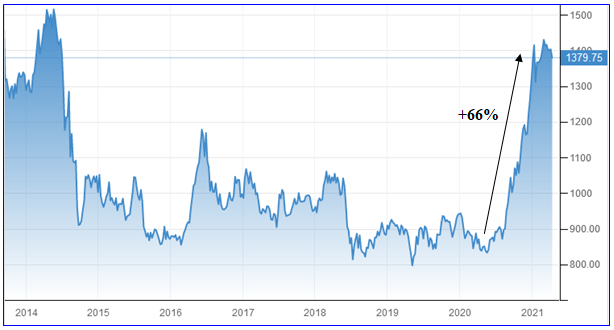 Source: Bloomberg
Source: Bloomberg
Soybean production in Paraguay is forecasted to increase by 20% over the current decade, and we are pleased to be part of this grow.
ARGENTINA – Cuts and regrowing at Tata Cua forest (April 2021).
After the forest fire registered on 25/08/20, we have started to evacuate the slash on cutting, twigs and dead wood. It’s key to perform this operation after a fire otherwise you significantly increase the fire danger for the following year’s by leaving the dismantled crowns on the ground forming a thin layer of fine dry fuel.

Furthermore, trees weakened by fire may also be subject to bark beetle attacks causing additional mortality. These attacks can even be extended to neighboring trees that were not affected by the fire and cause further mortalities.

We estimate that over 50% of our tree plantations, compound of eucalyptus and pines trees, were affected in various stages. Trees planted after 2008 have been totally affected and the oldest one have only be partially affected.


Pine trees plantations, which account for 77% of the affected area, were the most resilient to flame as their thick bark does not catch fire or burn easily. It also protects the inside of the trunk, the living tissues that transport water and nutrients, from heat damage. Pine trees drop lower branches as they age, preventing fire from spreading to tree tops. Fire can destroy the cambium (tissue between wood and bark that actually grows to form wood in trees) on part of the trunk surface without necessarily killing the tree. The consequences for the tree are then proportional to the height of the charred trunk.
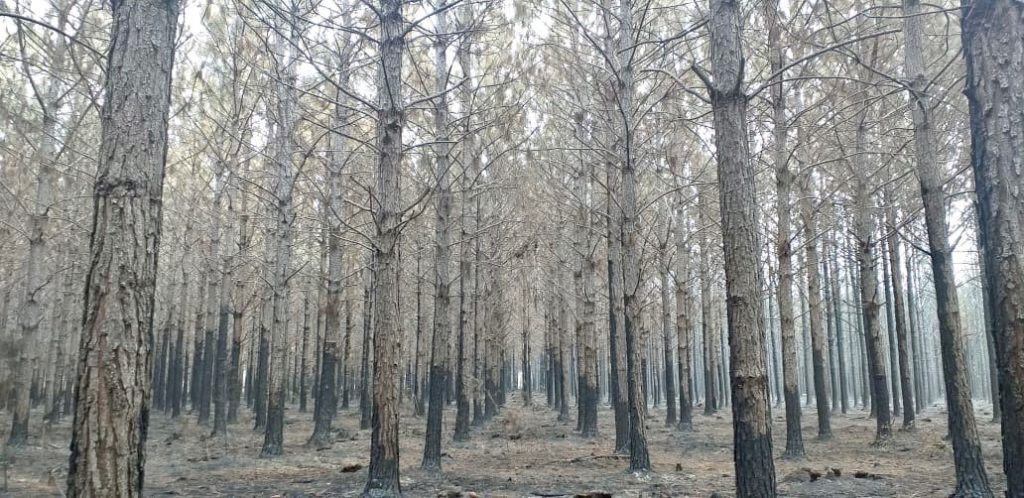
The good news is that our forest advisor has identified some signs of natural regrowth: Eucalyptus and pine trees have both a strong regeneration capacity. You can see some cuts of pine trees partially affected which have been sold to a wood products manufacturer.


